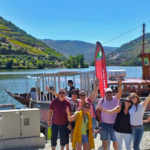Portugal and seasonal conditions
So, you want to visit Portugal and you’d like to find out the best time of year? Due to Portugal’s location between the Atlantic ocean, the Mediterranean, and the continental mainland, seasonal conditions vary considerably depending on the region.
The Alentejo, Central and Algarve regions can reach temperatures exceeding 40°C (104°F) during the peak summer months, and can also be very busy. The Northern region offers a more comfortable summer break.
Portugal can even offer warm sunshine in the winter, with its subtropical islands of Azores and Madeira, but the cooler months are also ideal times to visit the mainland’s huge range of cultural and historic sites.
Portugal’s vibrant calendar of festivals and holidays, as well as the natural calendars of wildlife, mean that it is worth choosing your dates carefully; if you are travelling in February, don’t miss Carnaval in Torres Vedras; while if you are travelling in Autumn, the Ria Formosa in the Algarve offers an absolutely spectacular diversity of birdlife.
To make it easier for you to choose the best time of year for you, (or, if your dates are fixed, to choose the best destination for your season) read on for our expert guide to Portugal in each season of the year.
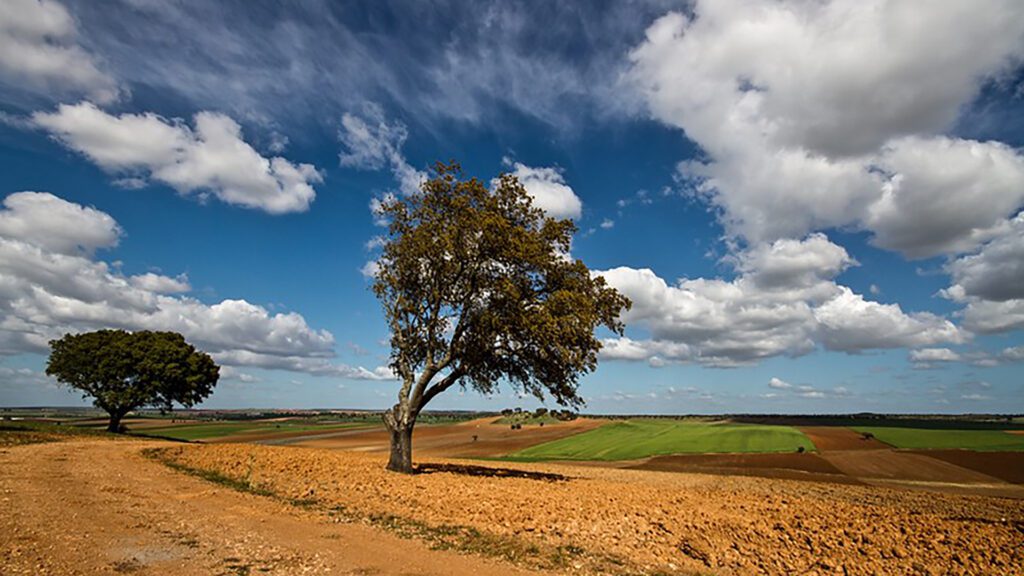

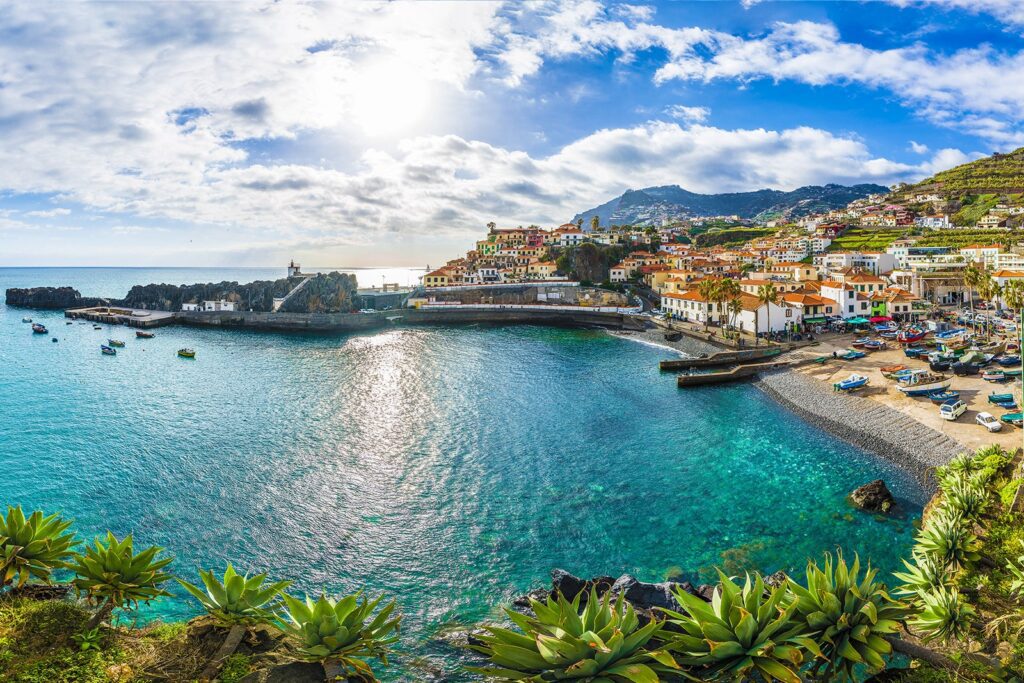
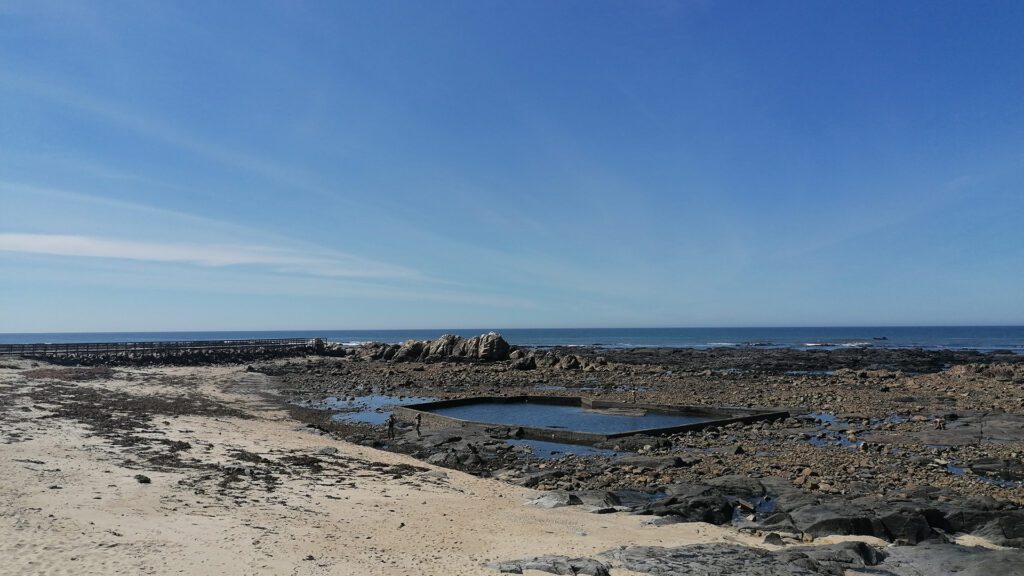
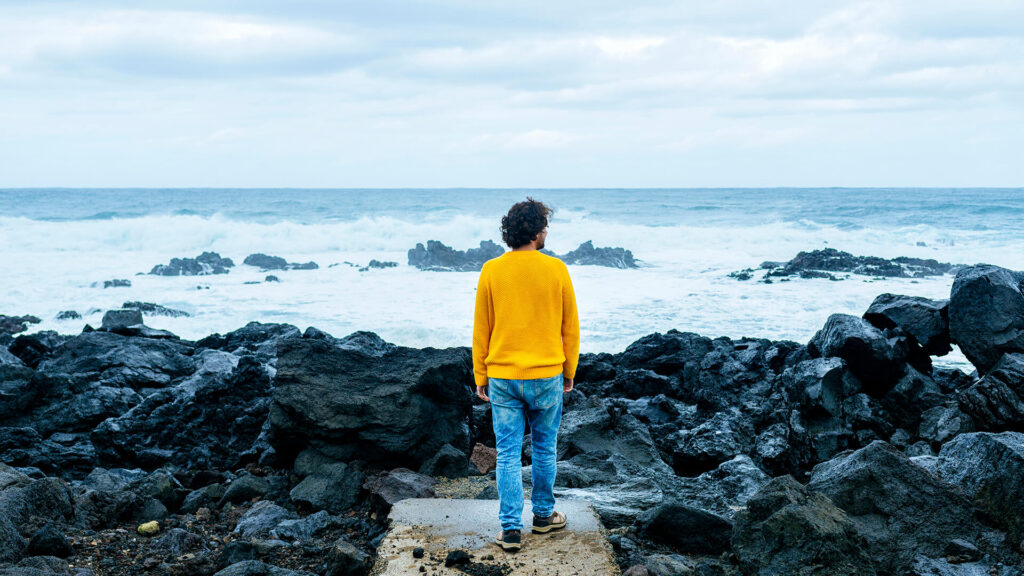
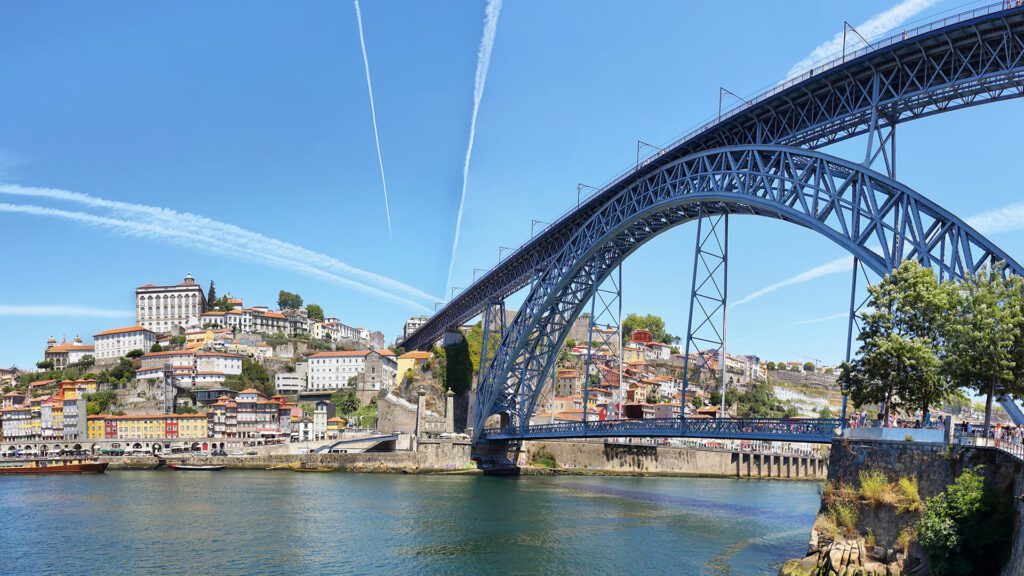
x
Spring in Portugal
Alentejo, the Algarve, the Central Region and the Douro Valley are all wonderful Spring destinations in Portugal, but the Central Region, known as Beira Litoral, is particularly stunning in this season for hikes among the wildflowers.
The Beira Litoral is known for the spectacular Serra da Estrela mountain range and architecturally spellbinding towns of Coimbra and Aveiro. The area also offers a beautiful Springtime beach destination of the Figueira da Foz, and for warm waters, check out the hot springs at Luso.
The Serra da Estrela Natural Park is the largest protected area in Portugal, and a paradise for outdoor adventurers with opportunities for rock climbing, mountain biking and paragliding. It is an area surrounded by historic villages and Roman ruins. Our Portugal historic villages tour gives a real insight into the heritage of this fascinating area.
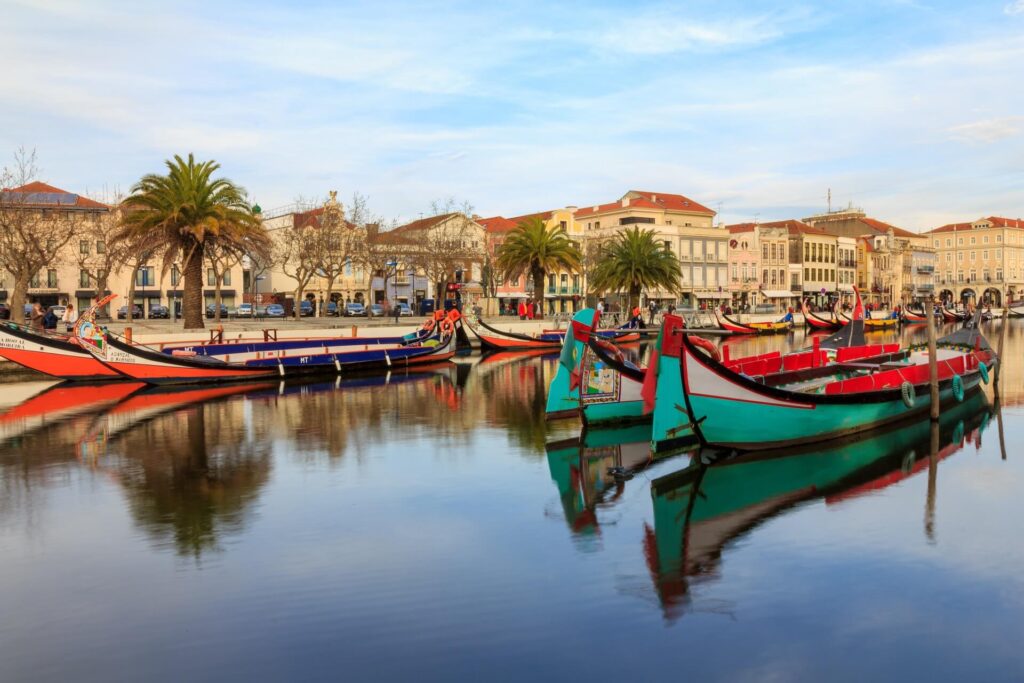
Aveiro is known as the “Venice of Portugal” due to its network of canals and colourful “moliceiro” boats, originally used to collect seaweed. They now offer a gentle tour around the beautiful town. Follow the Spring sea breeze out to the Praia da Barra, surrounded by wild sand dunes.
Coimbra’s university is a UNESCO World Heritage Site, and the town remains a vibrant contemporary cultural destination. Coimbra University’s annual Cultural Week starts the 1st of March, making Spring a great time to enjoy the city, with theatre, music, dance and arts exhibitions.
A fascinating feature of Coimbra’s Joanina Library is its colony of bats, resident since at least the 1800s. The pipistrelle bats feast on the bugs that would otherwise damage the ancient manuscripts held here. To take in other local secrets of Coimbra and Aveiro, check out our Coimbra and Aveiro private tour.
Another great Springtime destination is the Douro Valley. Apart from its hot summer temperatures, this region is also incredibly busy and expensive in the Autumn due to the wine harvest season. The region’s infamous wine can be enjoyed peacefully off-season at our luxurious Douro Valley tour — click to check out our virtual teaser!
x
Summer in Portugal
Northern Portugal offers lovely summer temperatures between 20 and 25°C, and you can enjoy exciting heritage, lush Minho and Alto-Minho landscapes, and refreshing Atlantic swims. Northern Portugal includes the historic cities of Braga, Guimarães, and Porto.
We especially encourage a summer trip to Porto to catch the 600 years old midsummer Festa de São João do Porto on 23rd June. This party has roots in pagan courtship, and includes a glorious diversity of traditions, including hitting each other with garlic flowers, jumping over bonfires, and swimming at sunrise.
Enjoy fire-grilled sardines under a sky of fireworks and illuminated balloons, check out the neighbourhood dance and music competitions and later join the beach parties at Praia dos Ingleses.

For a post-party recovery, head out to the Minho river region, home to peaceful pilgrimage routes, medieval castles and beautiful cathedrals. Our Minho Family Tour takes in the very best of this region and makes sure to include breaks to sample the most delicious local specialities.
If you are a real summer heat-seeker, but want to avoid Portugal’s southern crowds, we recommend heading across to Azores, with its absolutely beautiful beaches, dramatic volcanic landscapes, and lower-tourist numbers. We have written a special guide to visiting the Azores to help you plan your trip, but one thing you really must do is whale-watching!
Over 28 species of whales visit the nutrient-rich waters of the Azores, both individually and in pods. You can catch spectacular iconic displays of these peaceful giants leaping, diving, and spraying — and you may even be lucky enough to hear whale song with a hydrophone.

x
Autumn in Portugal
Lisbon is the place to be for city lovers in the Autumn, while the Algarve is unmissable for its incredible birdlife and still-hot Autumn beaches.
Lisbon cafes and shops reopen after the sleepy summer season in the city, and you will enjoy the city’s steep hills and wide range of cultural destinations much better in the Autumn.
Check to see if your visit will coincide with Lisbon’s internationally renowned film festivals of Doclisboa in October or the Lisbon and Sintra film festival in November. These festivals bring exhibitions, special events and vibrancy to the city streets.
To be seduced by this wonderful city in advance, we recommend watching Wim Wenders’ love letter to the city “Lisbon Story”, which captures its streets in Autumn.
Follow in the steps of the film’s characters by getting lost in the labyrinthine streets of Alfama, stopping for one of the many breathtaking panoramic hilltop views and combining the delicious sweetness of a pastel de nata with an aromatic espresso, known locally as a “bica”.
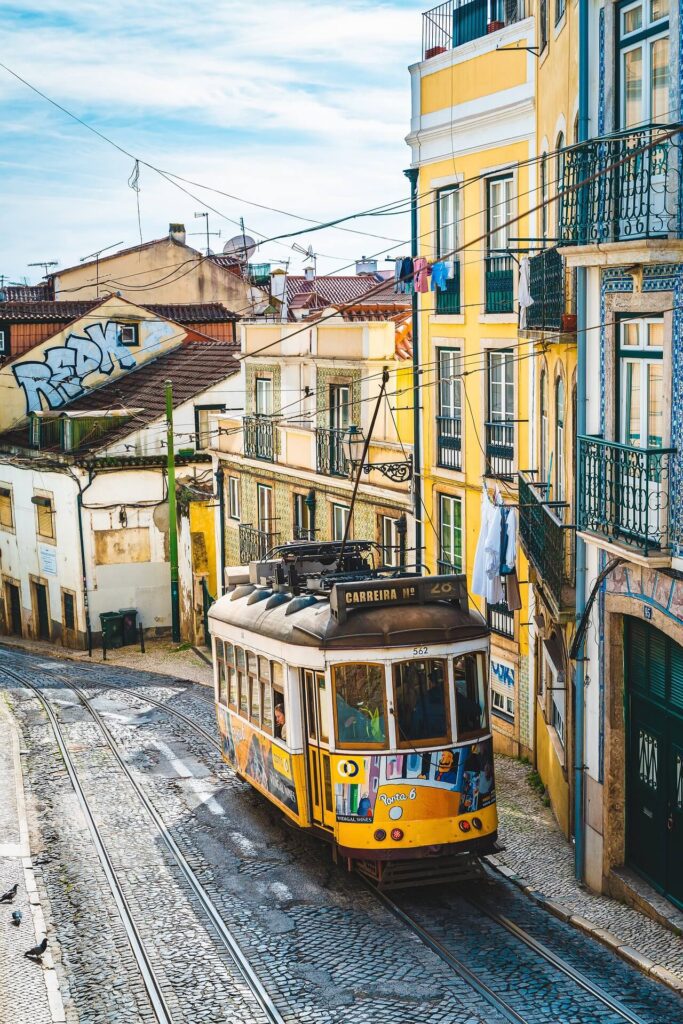
For those wanting to explore Portugal’s wine harvest, we recommend heading to the Alentejo region, which offers a quieter and more affordable harvest experience than the busy Douro valley. The meeting of the Oeiras and Guadinia rivers makes the territory perfect for grapes, and you can sample the year’s specials at local vineyards.
We finally come to Portugal’s top holiday destination: the Algarve. If you enjoy the buzz of sharing this region’s beautiful beaches and landscapes with the rest of the world, of course summer is the most popular time to visit. However, Autumn brings the stop-over of birds on their long journeys southwards.
In Sagres, locals celebrate these brief visitors with the annual Birdwatching festival, which includes boat trips, workshops and many family friendly activities. A boat trip in the Ria Formosa will give you glimpses of flamingos, ibis, herons and egrets, set against a stunning autumnal colour display.
x
Winter in Portugal
Portugal’s cities offer festive Christmas destinations, while the Serra da Estrela offers fantastic skiing holidays. Museums and other cultural destinations are great over winter, and you can take time to explore the country’s heritage away from the peak-season crowds.
In February, the best carnival destinations are Ovar in Aveiro and Alcobaça in Llíria, for fabulous costumes and parades. Carnival foods include the nourishing Cozido à Portuguesa stew and the sweet treats of Mallassadas, Cavacas and Sonhos.
However, if you are looking for sun in winter, head over the sea to Portugal’s island destinations, the Azores and Madeira. Madeira offers magical UNESCO protected forests and lava-rock tidal pools, still warm enough to enjoy in winter.
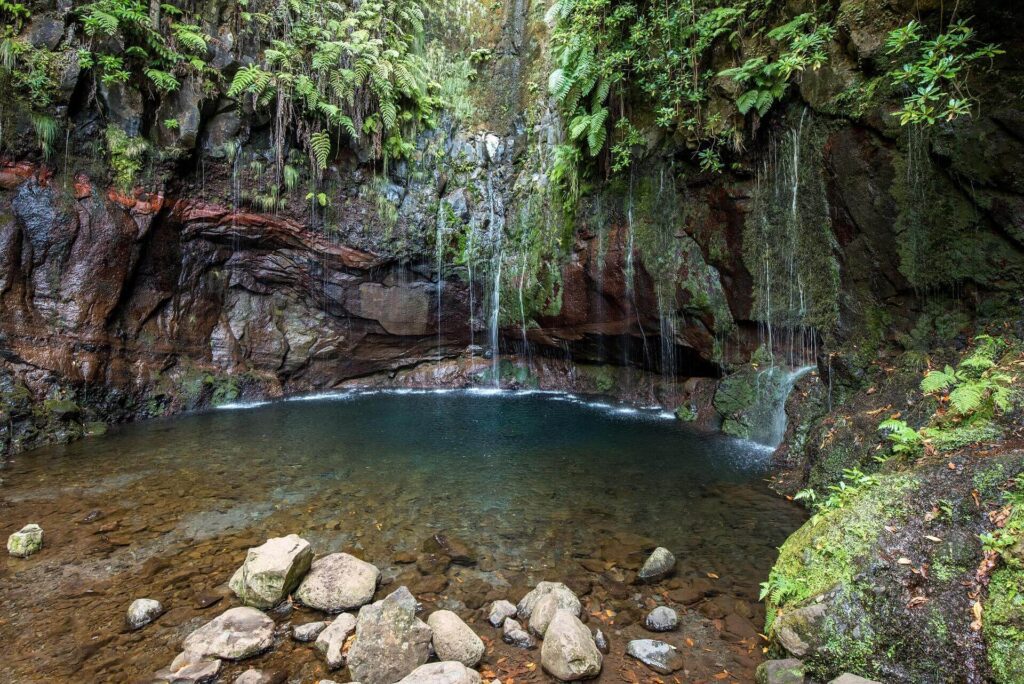
x
Do get in touch with us at Your Tours Portugal for a truly customised holiday experience, and for expert written guides to all areas of our beautiful country.

